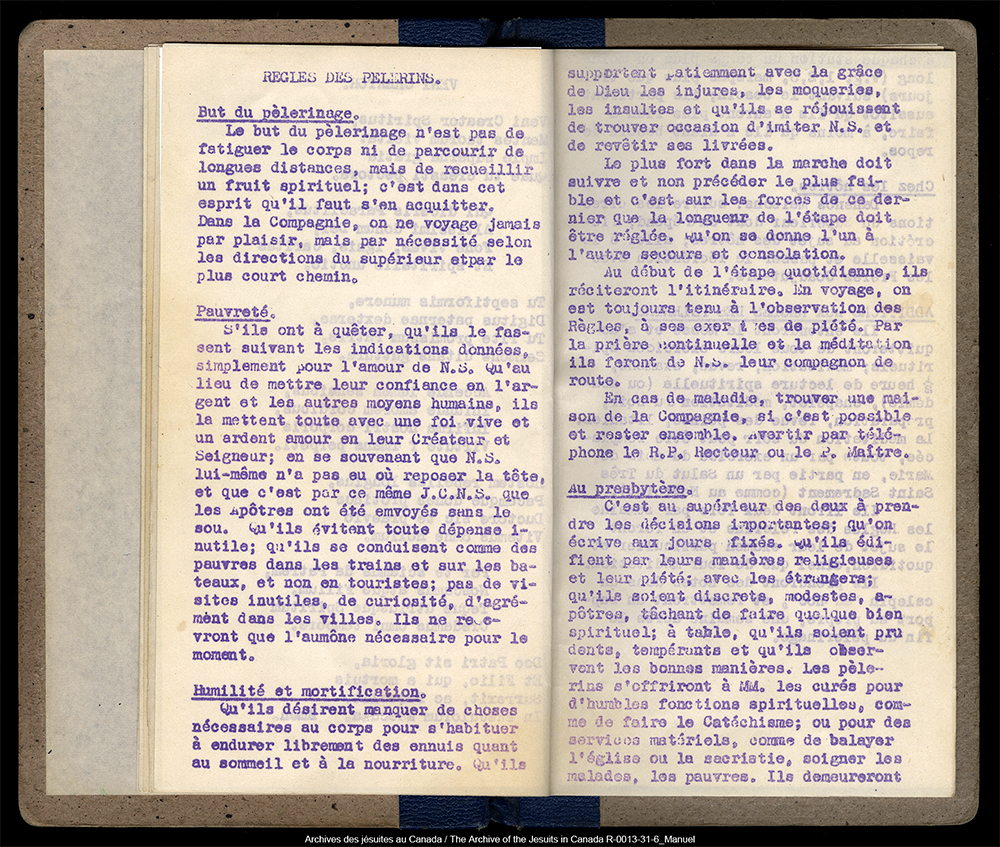The “Pilgrims’ Rules” (Règles des pèlerins) prepared for the novices explained the purpose of this pilgrimage and the way in which novices should undertake the pilgrimage:
“The purpose of the pilgrimage is not to exhaust the body or to travel long distances, but to reap a spiritual fruit; it is in this spirit that it must be fulfilled. In the Society, one never travels for pleasure, but by necessity, according to the directives of the superior and by the shortest way.” (Montreal Novitiate, “Pilgrims’ Rules” (Règles des pèlerins), § 1, on the goal of pilgrimage)
“[Pilgrims] should avoid any unnecessary expense; they should behave like the poor on trains and on boats, and not as tourists; no visits that are unnecessary, out of curiosity, or simply pleasant in cities. They will only receive the alms necessary for the moment.”

The rules integrate and expend – especially with regard to humility and mortification – the few lines devoted to the pilgrimage in the Jesuit Constitutions. They emphasize the configuration to Christ and his apostles, as pilgrims were invited to endure needs of the body while keeping in mind that Christ himself had no place to lay his head (Matt 8:20), and that the apostles were sent without money (e.g., Luke 9:3). The imitation of Christ would also take the shape of enduring insults and mockeries. An important invitation was to make Christ their “companion on the road” through constant prayer and meditation. Other rules explained how to behave at the rectory, how to proceed in case of illness, etc. Hence, the main reference was to Christ, of whom novices want to become companions, and not to the experience of Ignatius or that of the first companions – the Testament by Ignatius became more widely accessible only in the early 20th century by its translation in the vernacular. The experience was meant to be embodied, not limiting itself to a spiritual reflection.